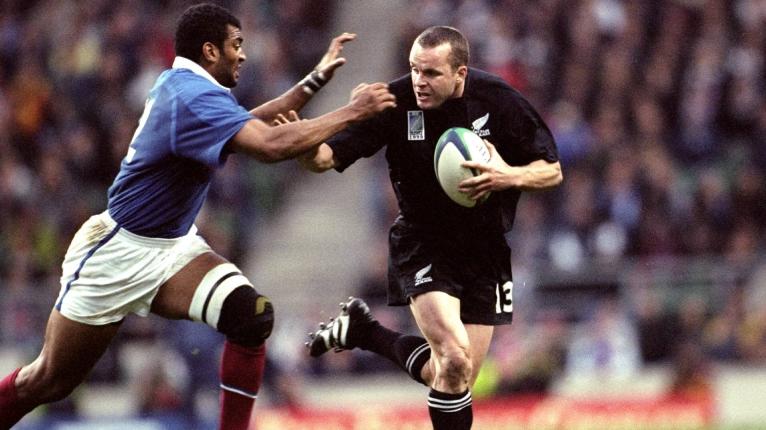The Paekakariki Express: How Christian Cullen became the greatest attacking fullback of all-time

Matt Burke remains the best all-round fullback I have seen in nearly 40 years of playing, watching and writing about the game.
But the mantle of the best attacking fullback of them all remains on the shoulders of Christian Cullen. I was reminded of this watching the documentary Christian Cullen – A Salute to Greatness, which screened on New Zealand TVs last night. It was a veritable highlight reel of Cully’s greatest hits in a career cut short by injury, while his days in New Zealand rugby were ended by the vagaries of selectors John Mitchell and Robbie Deans in 2003. They deemed the likes of Leon MacDonald and Ben Blair, even Ben Atiga, as superior footballers at that stage.
In truth, neither of that trio was fit to even lace Cullen’s boots at his peak, which was 1996-2000. Incredibly, he went to just one Rugby World Cup and ended up at centre.

Cullen, aka the Paekakariki Express, is long retired, and has moved into the commentary box. One of his colleagues, Grant Nisbett, rates him as the best player he has seen, and that’s saying something given that Nisbo has seen over 300 Test matches.
The bare stats show that Cullen scored 46 tries from 58 Tests. Only Doug Howlett has more for the All Blacks. In 85 Super Rugby games for the Hurricanes, he notched 56 tries and often in a side that occupied the lower reaches of the log. Just three players have scored in the competition’s 24 years.
Inspired by the 1986-89 All Blacks fullback John Gallagher – there’s a man who could run a line outside his centre – Cullen made an early impression on this hack. As a pint-sized fullback in the Central Region Under 19s against their Northern Region counterparts, he showed he could step off both feet and was surprisingly strong for one who was less than 80kg. I was in the Northern Region No 15 jersey and attempted a shoulder charge as he was nearing the tryline. Guess who came off second best and looked like a goose?
Cullen made an art form out of making tacklers look like geese. One of the best tries I ever saw live, not televised, was at New Plymouth’s Rugby Park in 1995 for Manawatu against Taranaki. He scored a brace that day, but one of them showcased his pace, swerve and an in and out that Joeli Vidiri could have patented, embarrassing the home defence. The Naki won, but those who saw Cullen that day went away with his names on their lips.
Some of the tries he scored in 1996 defied belief, and this was highlighted nicely in the documentary. It may have been five or six, I lost count, defenders that he beat in a mazy, 97m run to score for the Hurricanes against the Waratahs. He beat more than six for the All Blacks against Scotland in Dunedin, though some of the tackling was flaky in the extreme.

Cullen wanted the ball, from anywhere, and had to call for it, often against his natural instinct, which saw him borderline taciturn. He forced Jeff Wilson to stay on the wing and forced Glen Osborne from fullback to wing. Great angles, accelerating through contact, no discernible loss of speed when stepping, off either foot.
Rugby had never seen such a player. The Hurricanes were up and down like a yoyo in the early years, but Tana Umaga and Cullen just kept setting tries up for each other.
Dane Coles revealed that his early inspiration was not a Sean Fitzpatrick or Norm Hewitt, but the small in stature kid with the shaved head from the back. Beauden Barrett, too, watching his Dad wind down his rep career, was entranced by Cullen.
Matt Burke was a truly great footballer, who scored 878 points, including 29 tries, in 81 Tests for the Wallabies. He scored three solo tries versus the All Blacks. That’ll do me, I thought.
But Cullen trumped Burke, and the mercurial Serge Blanco, for sheer attacking brilliance and thus joined the truly great fullbacks of New Zealand rugby: Billy Wallace, George Nepia, Bob Scott, and Don Clarke.
Since then Mils Muliaina and Ben Smith have joined those ranks. But even that exalted duo would tell you there was no one who could run like the Paekakariki Express in full flight.
In other news:













